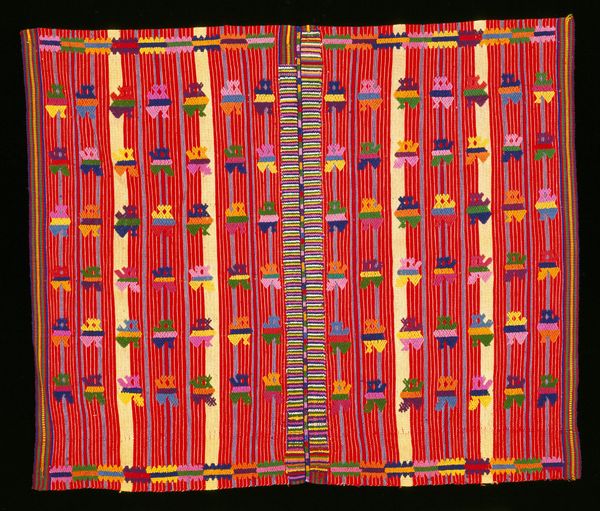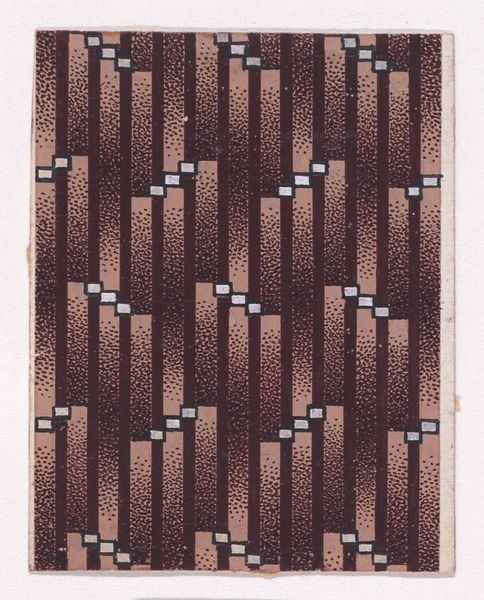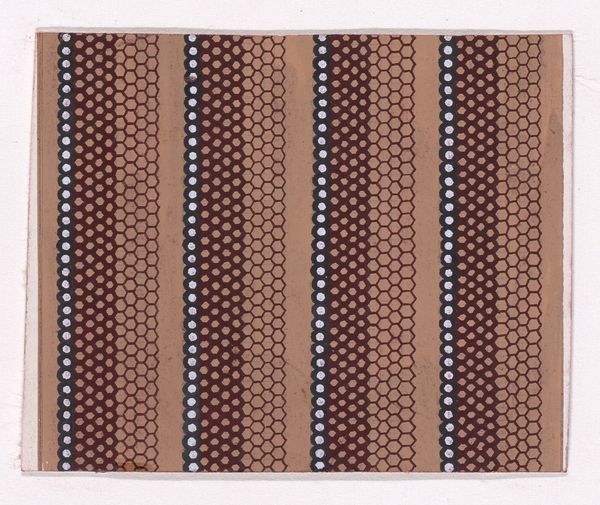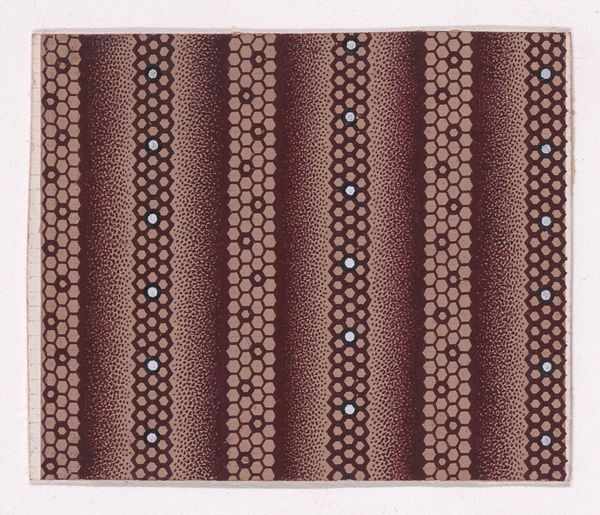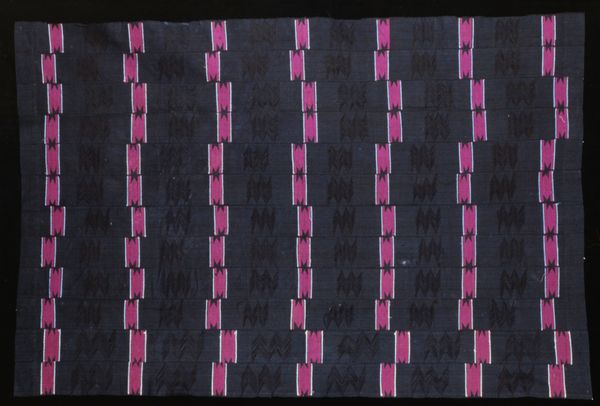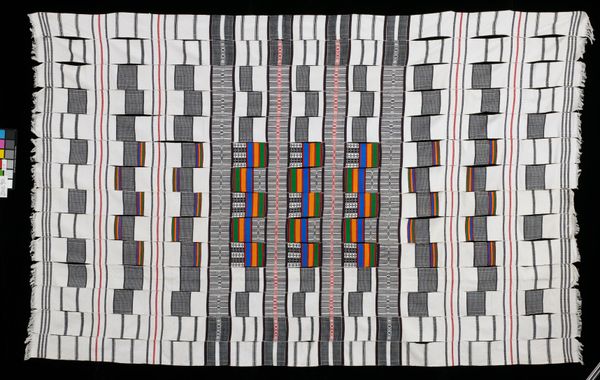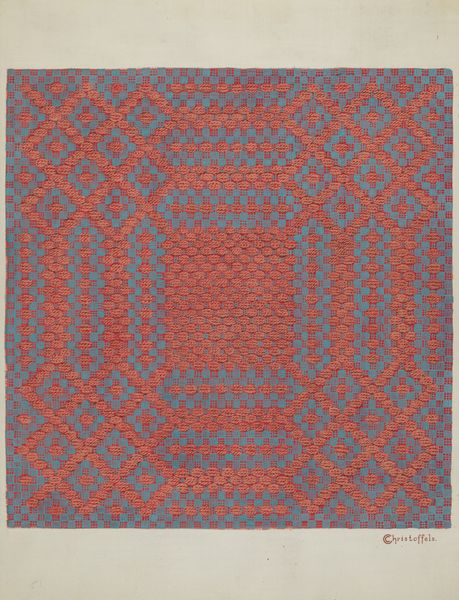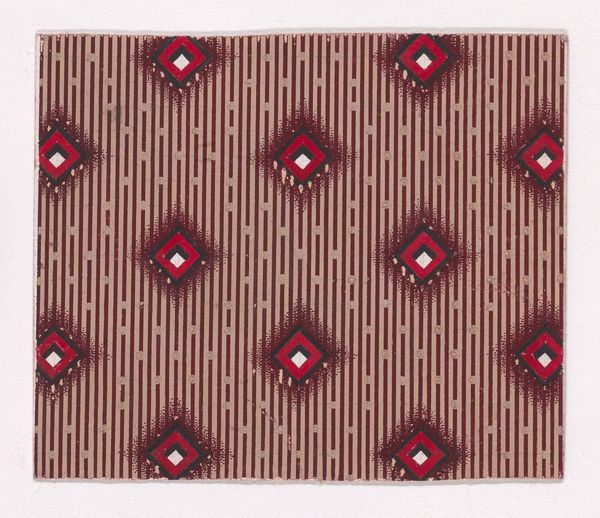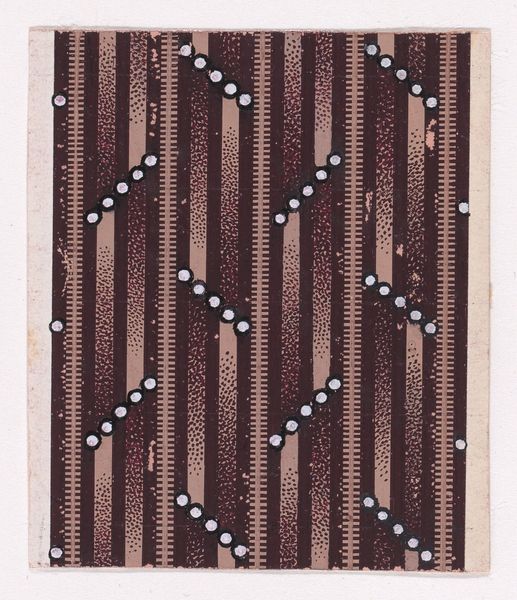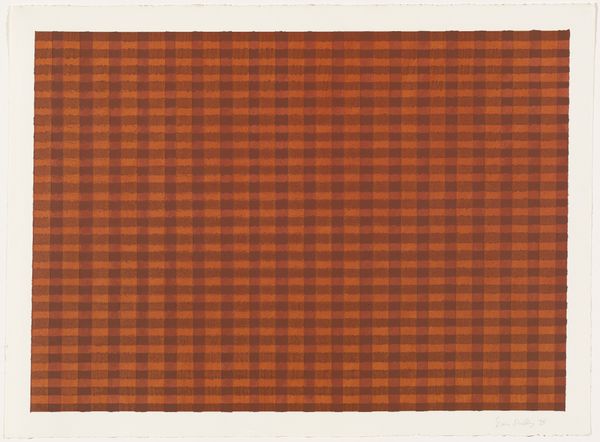
Textile Design with a Tartan Pattern and Decorating Vertical Stripes of Color 1840
0:00
0:00
textile
#
textile
#
geometric pattern
#
geometric
Dimensions: Sheet: 2 3/16 × 4 5/16 in. (5.6 × 10.9 cm)
Copyright: Public Domain
Curator: This immediately gives me a sense of lived history, of fabrics worn and softened with time. Editor: Yes, this textile design from 1840 presents a fascinating example of early pattern work. This piece, attributed to an anonymous maker, showcases a tartan pattern alongside vertical stripes. It is currently held in the collection of the Metropolitan Museum of Art. Curator: Thinking about material history, it would be interesting to know the provenance of the dyes used here. What material reality produced that dusty rose and deep brown? Those tones aren't often seen in contemporary design. Editor: Precisely. What agricultural practices were involved? Who cultivated and harvested them, and under what labor conditions? Understanding the textile manufacturing industry of the era, with its implications for industrial labor and potentially colonial supply chains, enriches our understanding of this object. The labor involved in both producing the materials and weaving is present in the design itself. Curator: This piece asks many questions about textile production and its connection to class, identity, and the politics embedded in dress codes during that time. A garment made of these textiles could speak volumes about the wearer's allegiance, background, or aspirations. Editor: It pushes the boundaries of what we consider craft versus fine art. Was this design meant to be elevated? Or mass-produced? We have to reconsider value systems in relation to materiality. Curator: Definitely. When was tartan became politicized as an emblem of cultural identity and defiance? The repetitive nature is itself very striking, a quiet statement of cultural endurance. Editor: Yes. Examining the weaving process as work gives rise to larger inquiries on economy and society during the industrial era, in addition to art. Curator: It is so powerful to see something designed almost 200 years ago carrying so many complex questions about its original time period—questions that echo forward to us today! Editor: It's fascinating to consider these everyday textiles not merely as decoration but as coded communications about labor, power, and the global networks of their production.
Comments
No comments
Be the first to comment and join the conversation on the ultimate creative platform.

